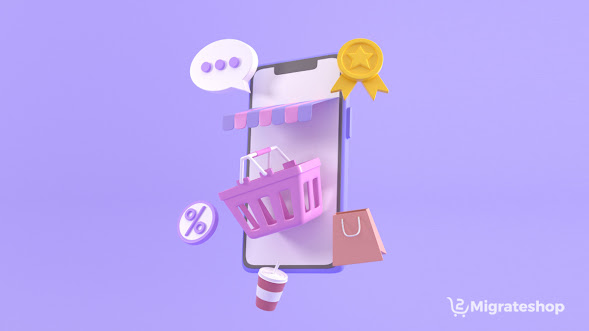Build an Amazon Clone refers to the process of creating a website or application that closely resembles the functionality and features of the Amazon e-commerce platform. Migrateshop’s Amazon clone typically includes core features such as user registration, product listing and search, shopping cart, payment gateway integration, order management, and vendor management. The process of building an Amazon Clone revolves around creating a website or application that emulates the comprehensive functionalities and features of the highly acclaimed e-commerce platform, Amazon. It encompasses the development of a platform that enables users to browse and purchase products, allows sellers to list and sell their items, and incorporates essential functionalities like order management, secure payment processing, and customer review systems.
The primary goal is to construct a website that captures the essence of the Amazon user experience while customizing it to suit the specific requirements and preferences of the business.
Buy2Amazon is an exceptional multi-vendor eCommerce script specifically designed for creating an Amazon Clone. This powerful script allows entrepreneurs to establish their own multi-vendor eCommerce website similar to renowned platforms like Amazon, Aliexpress, Etsy, and more.
Process of Build an
Amazon Clone Website
Building an Amazon clone website involves a step-by-step process that includes the following key stages:
Planning and Research: Define your project goals, target audience, and desired features. Conduct market research to understand the competition and identify unique selling points. Determine the technology stack and platform based on your requirements.
Design and User Interface: Create wireframes and mockups to outline the website's structure and user flow. Design an appealing and intuitive user interface, focusing on usability and conversion optimization. Develop responsive layouts to ensure compatibility across various devices.
Backend Development: Set up the development environment, including installing the necessary tools and frameworks. Implement the core functionalities of the Amazon clone, such as user registration, product listing, shopping cart, payment gateway integration, order management, and vendor management. Ensure proper database design and optimize performance.
Frontend Development: Convert the design into web pages using HTML, CSS, and JavaScript. Implement user interfaces for different pages, including search functionality, product listings, product details, and checkout process.
Integrations: Integrate necessary third-party services, such as payment gateways, shipping providers, and analytics tools. Ensure seamless connectivity and functionality between the Amazon clone and these services.
Testing and Quality Assurance: Conduct user acceptance testing to ensure the website meets the desired functionality and user experience. Validate the website's performance, security, and responsiveness across different devices and browsers. Perform a testing process and identify any bugs or issues and resolve it.
Deployment and Launch: Set up the website on a hosting server or cloud platform. Configure domain and server settings to make the website accessible to users. At last, we have to check and ensure that all features and integrations are working correctly.
Post-launch Activities: Monitor website performance and analytics using tools like Google Analytics. Continuously optimize the website for search engines (SEO) and user experience. Regularly update and maintain the website, addressing any security vulnerabilities or software updates.
It's important to note that the process may vary based on your specific requirements, chosen technology stack, and development approach.


Comments
Post a Comment